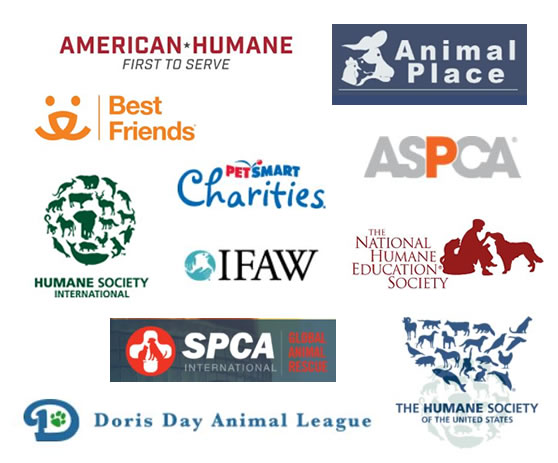In a world where the call for compassion towards animals grows ever louder, many individuals find themselves grappling with an important question: “Which animal rights organizations are truly worthy of our support?” This inquiry is not only valid but vital. Given the myriad of organizations dedicated to the cause, the challenge emerges in discerning which ones operate with integrity, transparency, and efficacy. In this exploration, we will delve into reputable organizations that have proven their commitment to animal rights, while also touching upon criteria that can aid in evaluating other entities advocating for this noble cause.
To begin with, it is crucial to understand the landscape of animal rights organizations. Some are focused primarily on legislative advocacy, while others concentrate on direct action, education, or rescue and rehabilitation. Each of these focuses offers unique avenues to promote animal welfare, but not all organizations adhere to the same standards of ethical practice and accountability.
One of the most renowned and widely respected organizations is the Humane Society of the United States (HSUS). Although the name might imply a focus solely on humane treatment, HSUS operates at the intersection of animal protection, wildlife preservation, and the promotion of vegan lifestyles. With an expansive outreach and a commitment to grassroots activism, HSUS has played a pivotal role in numerous legislative victories that have aimed to ameliorate the plight of animals in various sectors, from factory farming to animal testing.
Nevertheless, it is important to acknowledge that HSUS, like many large organizations, is not without its criticisms. Such critiques often stem from the perception that HSUS prioritizes national campaigns over local initiatives, potentially leading to a dilution of focus on immediate community needs. Therefore, potential supporters should scrutinize not just organizational achievements but also operational transparency.
Moving on, the World Animal Protection organization offers another salient model of effective advocacy. With a global presence, this organization champions animal welfare and actively campaigns against cruelty in many forms, from poaching to the horrors of the circus. Their studies and reports, grounded in rigorous scientific research, shed light on the grim realities faced by animals worldwide. Furthermore, World Animal Protection’s partnerships with communities help foster a culture of compassion and sustainable practices that benefit both animals and people alike.
However, as one navigates the complex world of animal rights organizations, a question arises: how do we measure the impact of these entities? Metrics such as financial transparency, effectiveness of campaigns, and community outreach can serve as barometers of an organization’s reliability. Ultimately, examining an organization’s financial statements, its allocation of funds, and its long-term goals can unveil its genuine commitment to the cause.
Another organization worthy of consideration is PETA, the People for the Ethical Treatment of Animals. Respected and often polarizing, PETA has consistently pushed boundaries in advocating for animal rights. Their campaigns utilize provocative imagery and messaging to spark public debate about animal cruelty. While some criticize PETA for its confrontational approach, its unwavering dedication to the cause cannot be denied. They have made significant strides in raising awareness around the unethical treatment of animals in industries such as fashion, entertainment, and food production.
Yet with such a dynamic approach comes the necessity for critical analysis. One must question whether PETA’s strategies facilitate constructive dialogue or merely provoke divisiveness among different factions of the animal rights community. Evaluating the outcomes of PETA’s campaigns can lead to insightful discussions about the most effective ways to advocate for change.
For those interested in grassroots initiatives, the Animal Rescue League of Boston exemplifies the power of community-based efforts. This organization emphasizes not only rescuing animals but also educating the public about responsible pet ownership and ethical treatment of animals. By integrating a shelter’s work with proactive education, the league fosters a culture of empathy that extends beyond the sanctuary walls. Understanding that long-term change requires systemic shifts, this organization invests in forming relationships within the community, thus establishing a nurturing support network for animals and their human companions.
As you reflect on these organizations, consider the value of local shelters or grass-root advocacy groups as well. Such organizations often rely heavily on donations, volunteer support, and community engagement. Supporting these frontline entities not only impacts the immediate welfare of local animals but also strengthens communal bonds around a shared responsibility for animal welfare.
Furthermore, engaging in a dialogue with fellow supporters and activists can illuminate a plethora of perspectives on effective organizational support. There exists a range of beliefs regarding the best approaches to animal rights, and understanding diverse viewpoints can enrich your own advocacy journey—leading to a more holistic understanding of the issue at hand.
In conclusion, as you ponder which animal rights organizations to support, it is incumbent upon you to weigh their track records, operational ethics, and alignment with your own values. From global advocates like the Humane Society and World Animal Protection to local rescue operations, each organization contributes uniquely to the movement for animal rights. The challenge remains in aligning your support with those entities that reflect not only your compassion for animals but also your commitment to ethical practices in advocacy. By making informed decisions and engaging with the animal rights community, you can become an instrumental part of a growing movement aiming to foster a more humane world for all beings.









